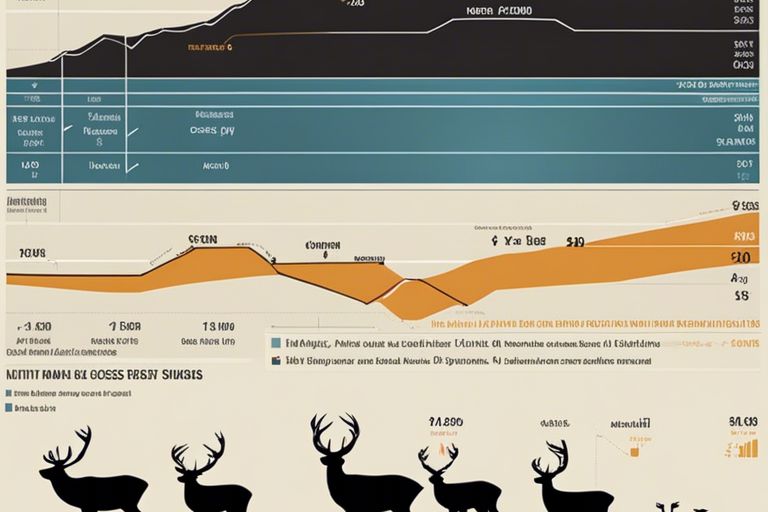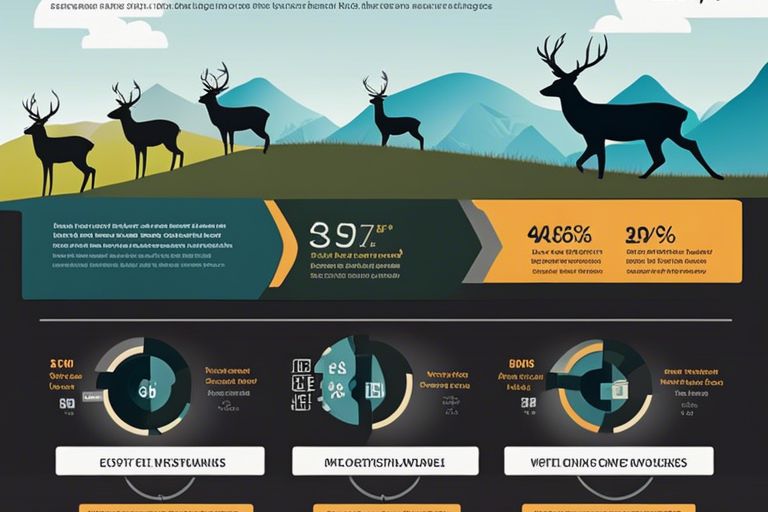Hunting success greatly depends on understanding and utilizing deer migration patterns. Knowledge of when and where deer migrate can significantly increase the chances of a successful hunt. Migration patterns dictate deer movement, feeding behavior, and preferred habitats, all of which are crucial factors in determining the success of a hunt. By studying and following deer migration patterns, hunters can strategically position themselves in key areas to improve their odds of a successful harvest.
Contents
- The Connection Between Migration Patterns and Hunting Success
- Factors Influencing Deer Migration
- Seasonal Migration and Hunting Strategies
- Analyzing Deer Behavior for Effective Hunting
- Habitat Preferences and Movements
- Using Tracking Technologies to Predict Migration
- Ethical Considerations in Hunting Migratory Deer
- Conservation and Management Practices
- Respectful Hunting Techniques
- Adaptation to Changing Environments
- Impact of Climate Change on Migration Patterns
- Shifting Hunting Practices in Response to Environmental Changes
- Summing up
The Connection Between Migration Patterns and Hunting Success
Factors Influencing Deer Migration
One of the key factors influencing deer migration patterns is the availability of food sources. Deer often follow the food, moving to areas where they can find the most nutrition. Weather conditions also play a significant role in deer migration, with colder temperatures driving deer to move to warmer areas. Human disturbance can also impact migration patterns, causing deer to avoid areas with high levels of human activity. This highlights the importance of understanding these factors in order to predict and track deer movement for hunting success.
This understanding can help hunters anticipate deer behavior and adjust their hunting strategies accordingly. One important aspect is to know the timing of when deer are likely to be on the move due to these factors. This knowledge can significantly increase the chances of a successful hunt.
Seasonal Migration and Hunting Strategies
Strategies for hunting deer during seasonal migration involve identifying key migration routes and setting up stand locations along these routes. Understanding the timing of migration is crucial for determining when to be in these strategic locations. Utilizing trail cameras can also be helpful in tracking deer movement patterns and adjusting hunting strategies accordingly. These strategies, coupled with knowledge of deer behavior and migration patterns, can greatly enhance hunting success.
Analyzing Deer Behavior for Effective Hunting
Habitat Preferences and Movements
Clearly, understanding the habitat preferences and movements of deer is crucial for successful hunting. Deer are known to be selective about their habitats, preferring areas with adequate food, water, and cover. Learning about their preferred vegetation types, such as dense forests or open fields, can significantly increase the chances of encountering them during hunting season.
Using Tracking Technologies to Predict Migration
The use of tracking technologies, such as GPS collars and trail cameras, has revolutionized the way hunters can predict deer migration patterns. It allows hunters to gather crucial data on the movement of deer, including their daily routines, preferred routes, and resting areas. This valuable information can be .\ critical in developing effective hunting strategies and increasing the likelihood of a successful harvest.

Ethical Considerations in Hunting Migratory Deer
Unlike non-migratory deer, migratory deer present unique ethical considerations in hunting practices. The migration patterns of deer, such as the A Record-Breaking Migration by an Adult White-Tailed Deer, can impact hunting success and raise questions about the sustainability of hunting practices.
Conservation and Management Practices
On the conservation front, it is vital for hunters to be aware of the impact of their hunting practices on migratory deer populations. Conservation efforts should focus on maintaining and preserving the natural habitats that support migratory deer routes, ensuring that these majestic animals have safe and undisturbed paths to follow during their seasonal journeys.
Respectful Hunting Techniques
Conservation and ethical hunting practices go hand in hand when it comes to migratory deer. Respectful hunting techniques involve not only complying with hunting regulations but also showing respect for the animals being hunted. This includes taking clean shots to minimize suffering, using ethical hunting gear, and always abiding by principles of fair chase.
Deer are resilient animals that play a crucial role in our ecosystem. It is our responsibility as hunters to uphold the highest standards of ethical conduct when harvesting migratory deer, ensuring that we contribute to their conservation and sustainable management for future generations.

Adaptation to Changing Environments
Impact of Climate Change on Migration Patterns
Many variables influence the migratory patterns of deer, but one of the most significant factors impacting their movement is climate change. On a global scale, shifting temperatures and changing weather patterns have disrupted the traditional migration routes of deer herds. This alteration in the environment can have a profound impact on the success of deer hunters.
Shifting Hunting Practices in Response to Environmental Changes
Migration patterns of deer are not the only thing that needs to adapt to changing environments – hunting practices also need to evolve in response to these environmental shifts. Stronger storms, droughts, and other unpredictable weather events can affect deer behavior and habitat, impacting hunting success rates. Hunters must be prepared to adjust their strategies and methods to effectively track and harvest deer in these changing conditions.
Summing up
Presently, migration patterns play a crucial role in determining deer hunting success. Understanding when and where deer move can significantly increase the chances of a successful hunt. By studying their seasonal movements, feeding habits, and preferred habitats, hunters can strategically plan their outings to target these migrating herds. Monitoring migration patterns allows for better tracking, scouting, and positioning, ultimately enhancing the overall hunting experience. In brief, being knowledgeable about deer migration can greatly impact a hunter’s success rate in the field.

Leave a Reply